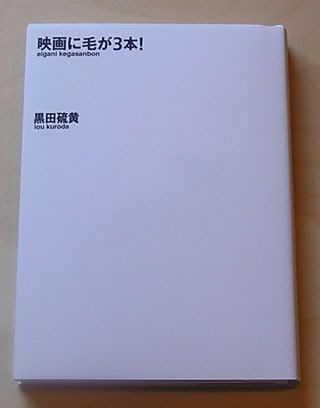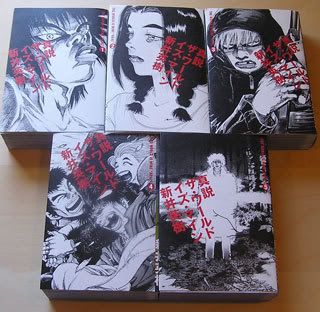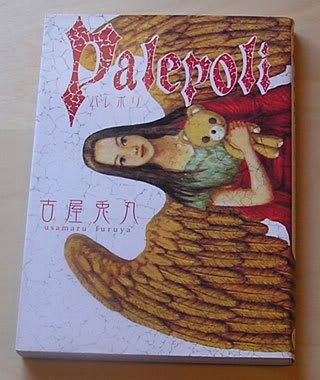
Little Forest (リトル・フォレスト)
by Daisuke Igarashi (五十嵐大介)
published in Afternoon (Kodansha)
2 volumes (2002-2005)
Amazon.jp
I'll follow up my post last week about one hotshot artist's "fans only" book with another one.
In general I dislike the term "slice-of-life," mostly because it gets overused when people confuse it with the simply mundane. I don't think that the lack of tournaments, murders or slapstick romance automatically means that a story is "slice-of-life," as in, nothing happens. In order to get a truly accurate portrayal of a bit of ordinary life, you need constant reminders of the things we do day in and day out. Eating, for instance. If I were to describe a manga that is truly "slice-of-life," it would need plenty of copious descriptions of cooking. Hmmm, a gourmet thing, like Oishinbo? Nahh. Let's say it would be set out in the country, in a farming town. Throw in some descriptions of local flora and fauna, give it some area background. Now we're getting somewhere. Give it an extra kick and pack it with all sorts of DIY tips and tricks, elaborations on the pitfalls of living on your own in the sticks, a real primer on rural Japan. Now drain out any hints of character, plot, or sentimentality, until it's just you out there, gathering fruit and harvesting vegetables. Welcome to Little Forest.
I exaggerated a bit for dramatic effect there. There are characters in Little Forest, though you would be forgiven for not realizing it. Of course, there's no missing Ichiko, the protagonist, who occupies at least 95% of the screen time. Bits and fragments of her background are revealed through anecdotes (all relating to food), but these are provided offhandedly, without a clear dramatic purpose. There are many things you could call Little Forest: a cookbook, a journal, a handbook. But it is not a "story."
The aesthetic effect is complex, particularly on a non-Japanese mind. The entire point of the series appears to be self-sufficiency, so each installment features a dish or meal scavenged or harvested from Ichiko's surroundings in rural Komori ("little forest"). Country food, where the people truly live off the land, is nearly unrecognizable from the prepared and packaged food of the city, and this holds true in Japan as well as America. Though Igarashi does provide some descriptions of flavors and textures through the narration for the benefit of his metropolitan countrymen, there is absolutely nothing but the imagination for ignorant Westerners such as myself to rely upon. The utilitarian almanac material that makes up most of the book is occasionally mouth-watering but unlikely to be of practical use to any but the most adventurous of souls. So if it primarily consists of a dizzying amount of natural information that is useless to 99% of its readers, what is the point of Little Forest anyway? It lies in the effect this information has on the reader as it passes through the brain. If the prospect of going to the supermarket and buying ingredients and produce for a recipe is daunting, imagine having to spend weeks and months growing that produce, or hiking into the mountains looking for those leafy herbs to use for flavor. The sheer amount of labor necessary to create the dishes depicted in the manga is mind-boggling to those living in the lap of luxury, a reminder of both the value of food and the merits of hard effort.
The art is, as with all of Igarashi's works, gorgeous. All of his manga contain such love for the imagination and the natural world (and total disinterest in "normal" city life) that it's hard to imagine him not coming up with something like this at some point in his career. While there are no wild flights of fancy as in Witches or Hanashippanashi, the organic linework and majesty of nature featured within tap into that same source of magic. Little Forest is a very acquired taste on its own, but just another piece of the stunning tapestry Daisuke Igarashi continues to weave today.


